Different Types of Modes in Wireless Access Points (APs)
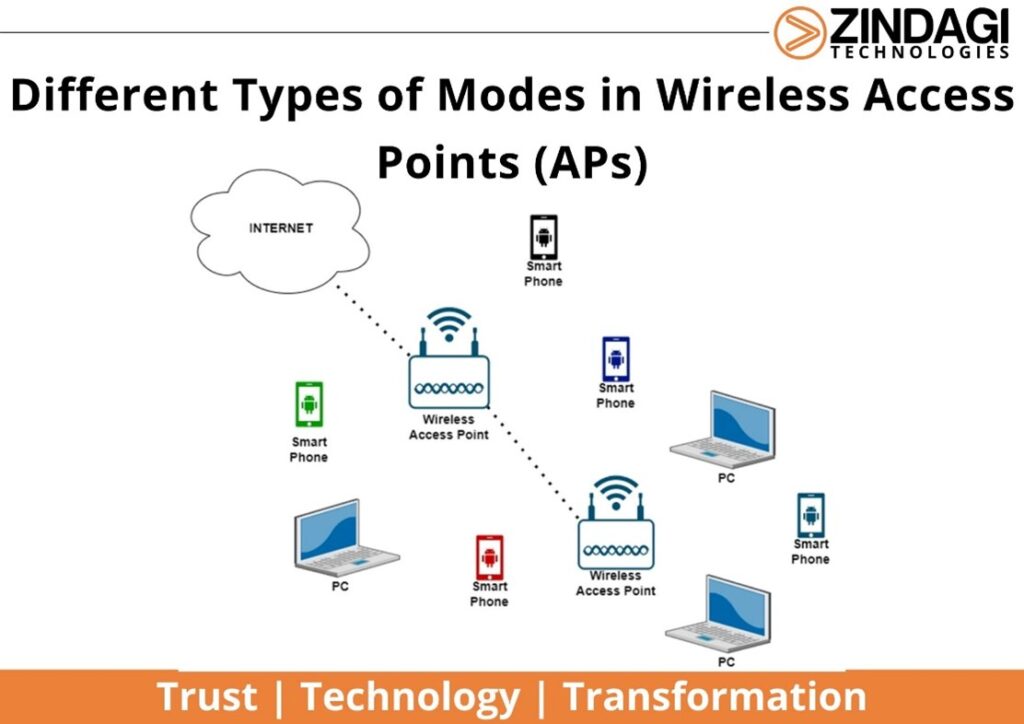
With the rise of the Wireless Technological domain in the world, Is it the sole purpose of the Access points (APs) to just connect the devices to the world of the Internet? With every technology breaking the shackles of being kept bound by wires and roaming around free by being wireless The roles and responsibilities of the APs had to be drastically increased for managing, monitoring, securing, etc. the wireless realm.
This blog will help us understand how the purposes of APs have grown from just being a medium for connecting devices wirelessly. The APs are usually two types ‘Indoor AP’ and ‘Outdoor AP’, but via this blog, we shall emphasize more on the functionality of APs than the types of APs.
In this blog, we shall discuss the different wireless AP modes that have strengthened the job of APs over the years. The modes of Wireless APs differ from the Access point model to the Access point model. So we shall try to cover as many wireless AP modes as possible in the WLAN (Wireless Local Area Network) domain. Every AP is configured to work in one of numerous different AP modes at a time. In some wireless AP modes, the AP offers network services to clients and in other modes, the AP dedicatedly functions as a network monitoring and management tool.
Let us start with the client-serving AP modes:
Local Mode
This is the by-default mode of (indoor)Access points. All APs support the Local Mode. An AP configured in Local mode tunnels all the client traffic for WLANs is forwarded via the CAPWAP (Control and Provisioning of Wireless Access Points) tunnel to the WLC (Wireless Controller). In this basic mode, the client devices such as PCs, Laptops, smartphones, etc. are connected to the Access point for wireless communication.
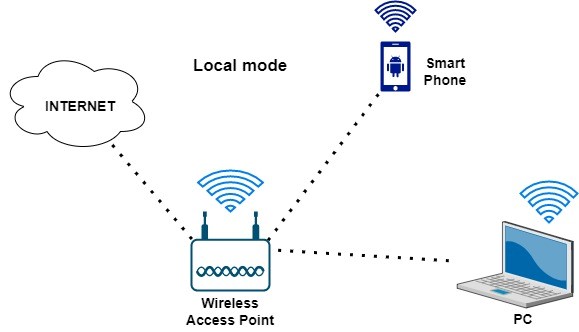
Bridge Mode or Mesh Mode
It is the by-default mode of (outdoor)Access points (also supported in indoor Access points). An AP in Bridge mode is used to connect two networks here the AP becomes a dedicated point-to-point or a dedicated point-to-multipoint bridge between networks. Two or more bridge-mode wireless APs can be used to connect two remote locations. Multiple bridge mode APs can be used to form outdoor or indoor mesh wireless network deployments. This mode is mainly used when APs do not have a wired connection to the WLC. Not all the AP models support this mode.
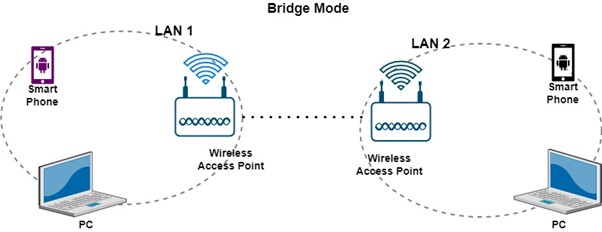
FlexConnect Mode
Previously known as H-REAP (Hybrid Remote Edge Access Point) In the FlexConnect Mode, the client traffic can be forwarded either by CAPWAP tunnel to the WLC or the traffic can be egressed at the APs LAN port (having a dependency on the WLAN configuration). So the connection can send the traffic locally without WLC or centrally with WLC. Therefore even if the WLC connection is lost the network traffic shall not be halted (conditional as per the WLAN configuration). All AP models support FlexConnect Mode. The APs configured in FlexConnect Mode do not support mesh operations
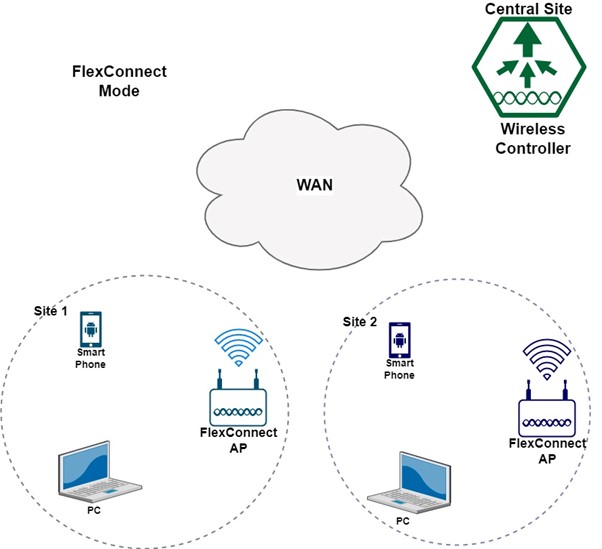
Flex + Bridge Mode
The Flex + Bridge AP mode is the combination of the FlexConnect AP mode and the Bridge AP mode. This mode enables the mesh operation feature of FlexConnect AP mode and provides the best of both world experience to the user.
Client Mode
In this mode, the AP can be connected to another AP as a client(device). Let us understand this with an example, suppose the Internet provided to your company is via a remote AP, and to get the Internet from that remote AP to your location/area/room, you can use another AP in client mode to achieve wireless Internet at your desired location/area/room.
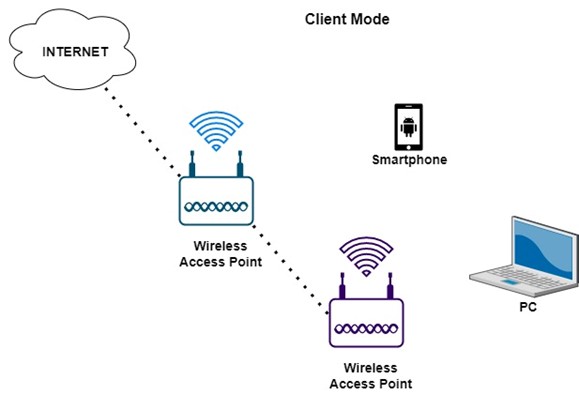
Now let us look over the network monitoring and management AP modes. These modes help APs function as management tools
Monitor Mode
In Monitor Mode, the AP radio’s purpose is limited to monitoring rather than broadcasting its wireless channel. All the APs models support this mode. In this mode, the APs act as sensors to monitor the WLAN for IDS (Intrusion Detection System).
SE-Connect Mode
In the SE-Connect Mode, The AP has a reserved connection to Cisco Clean Air technology for the RF spectrum analysis of the wireless channels to discover the interference patterns, source of interference, troubleshooting, etc. This is achieved by utilizing software such as MetaGeek Chanalyzer or Cisco Spectrum Expert. The SE-Connect mode is only supported on SE models with CleanAir.
Sniffer Mode
In the Sniffer Mode, the APs radios capture (sniff) the Wi-Fi traffic on the wireless channels. The packets are captured, stored, analyzed, etc. via various tools such as Wireshark, Omnipeek, etc. When in Sniffer mode the AP will neither broadcast its SSID nor can connect a client to itself. This mode is useful in troubleshooting a problem when on-the-site reachability is difficult
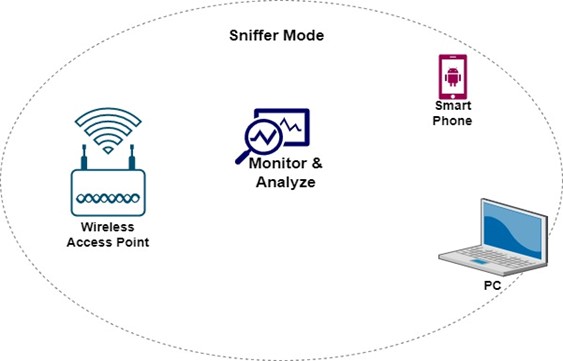
Rogue Detector Mode
In the Rogue-Detection mode, the purpose of the APs is to detect rogue devices that can trespass via wired and wireless networks. For rogue detection, the APs in this mode compare the MAC addresses on the LAN with those on the WLAN to detect a rogue device entry via both networks.
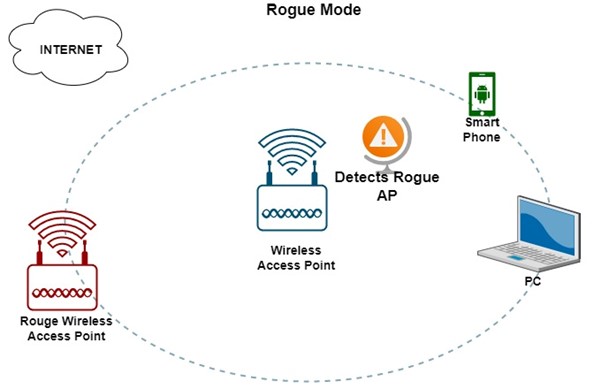
The modes of the APs can be changed either manually (by using the Command Line Interface of the APs) or by changing it via WLC (by using the WLC Graphical User Interface).
We hope you find this article helpful. If you need further guidance in any such task or if you are looking for expertise/professional services in designing, planning, and deployment for collaboration, IT consulting, Public/Hybrid/Private cloud solutions, data centre implementation, Network Security, Wireless, etc. then your quest for the IT consulting partner ends here.
Zindagi Technologies Pvt. Ltd. is a leading IT consulting and managed cybersecurity company situated in New Delhi, India. We believe in “Customer First” and provide quality services to our clients always. To get in touch with us drop us a message at 9773973971 or you can also reach us via email. Follow us on LinkedIn and be in touch with the latest technology blogs.
Author
Shiva Mendiratta
Consultant- Customer Success
